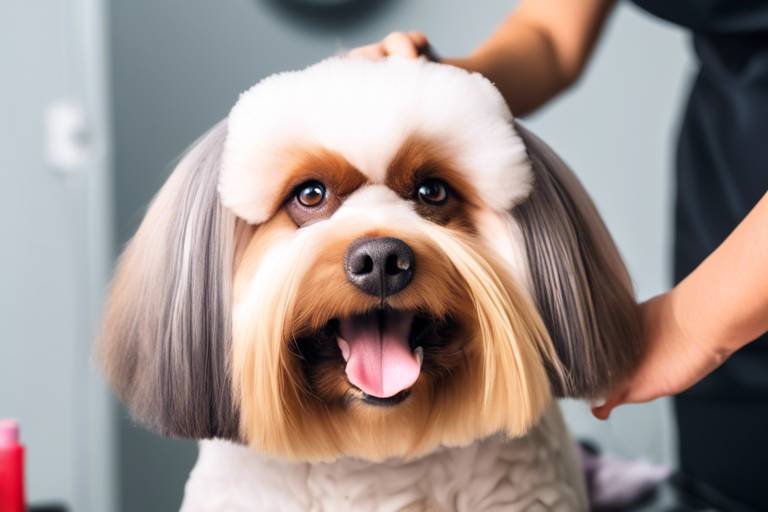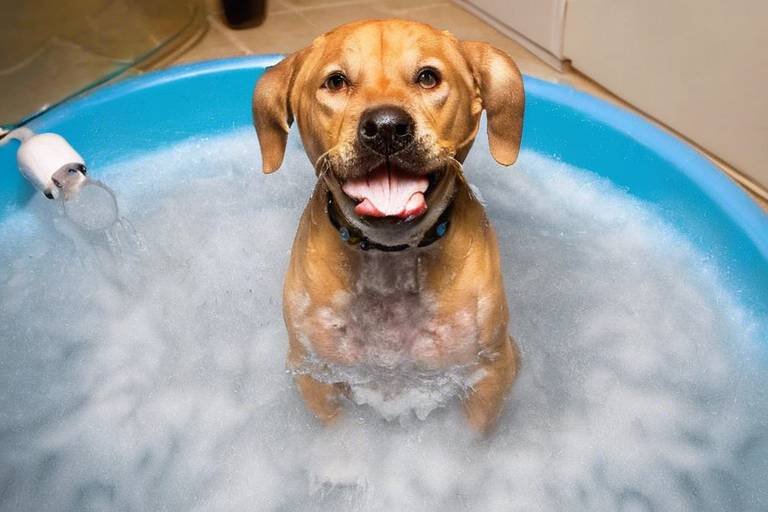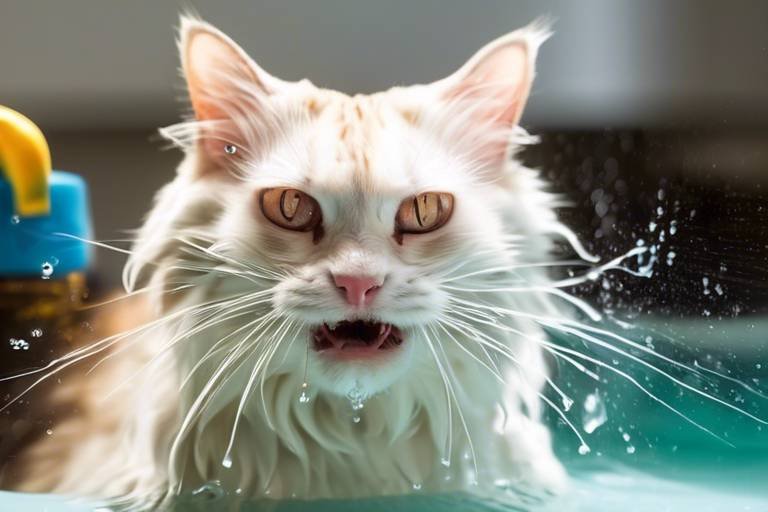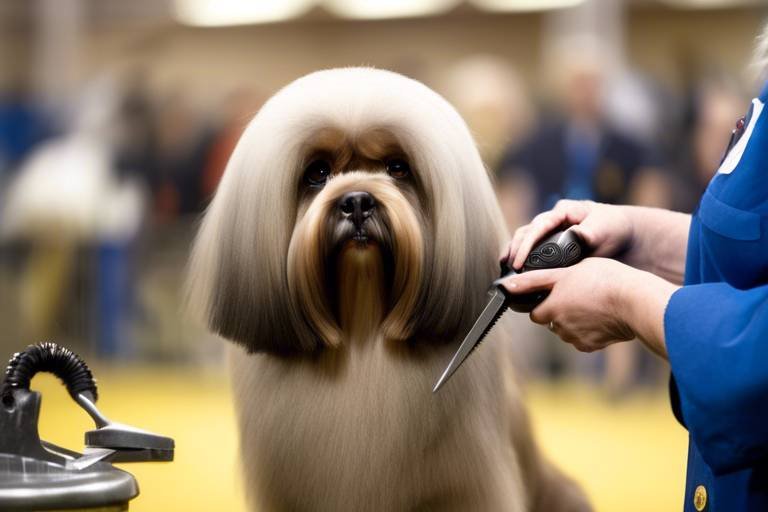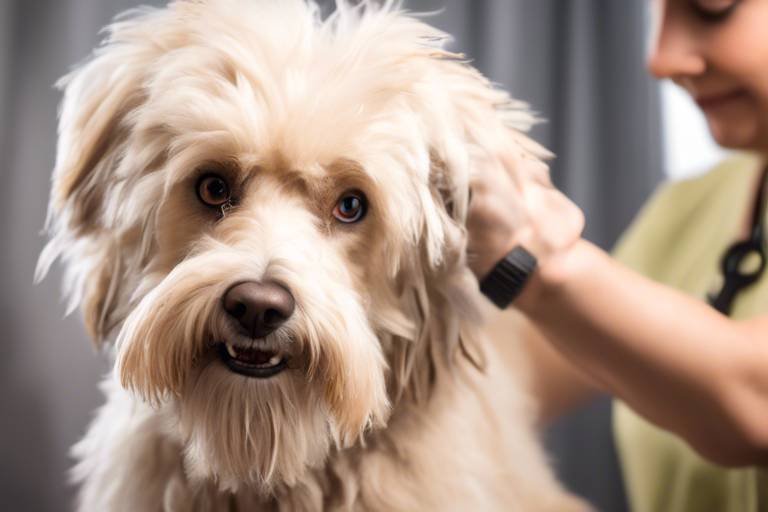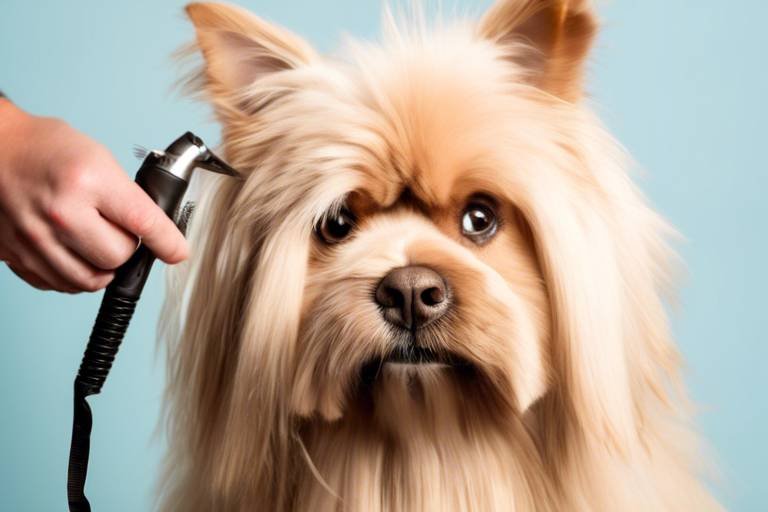How to Choose the Right Grooming Products for Sensitive Pets
Choosing the right grooming products for your sensitive pet can feel like navigating a maze. With so many options available, how do you ensure that you're picking the best for your furry friend? It's not just about finding something that smells nice or looks appealing; it's about understanding your pet's unique needs and sensitivities. Sensitive pets, much like humans, can experience discomfort and irritation from harsh chemicals and unsuitable products. In this article, we'll explore essential factors to consider when selecting grooming products specifically designed for pets with sensitive skin, ensuring their comfort and health during grooming sessions.
Sensitive skin in pets is more common than you might think. Just like us, our furry companions can have skin that reacts poorly to certain products, environmental factors, or even dietary changes. Signs of sensitive skin can include excessive scratching, redness, inflammation, or even hair loss. It's crucial to recognize these signs early on, as they can lead to more serious issues if left untreated. The causes of sensitive skin can vary widely, ranging from allergies to certain ingredients in grooming products. Understanding these factors is the first step in selecting appropriate grooming products that cater to your pet's specific needs.
When it comes to grooming products, not all ingredients are created equal. Some can exacerbate skin sensitivities, leading to discomfort for your pet. For instance, harsh sulfates, artificial fragrances, and certain preservatives can be detrimental to sensitive skin. Familiarizing yourself with harmful substances allows you to make informed choices when selecting grooming products for your pet. Always check the ingredient list and avoid products containing:
- Sulfates
- Parabens
- Artificial colors and fragrances
- Alcohol-based ingredients
By steering clear of these ingredients, you can help keep your pet's skin healthy and irritation-free.
Hypoallergenic grooming products are formulated specifically to minimize allergic reactions. These products often contain gentler ingredients that are less likely to irritate sensitive skin. Understanding their benefits can significantly improve your pet's grooming experience and overall skin health. When shopping for hypoallergenic products, look for labels that indicate they are tested for allergens and free from common irritants. This way, you can feel confident that you're making a safe choice for your beloved pet.
Maintaining the right pH balance in grooming products is crucial for sensitive pets. Our skin has a natural pH level that keeps it healthy and protected, and the same goes for our pets. Using grooming products that are pH-balanced helps to prevent skin irritation and maintain the skin's natural barrier. Products that are too acidic or too alkaline can disrupt this balance, leading to dryness, itching, and discomfort. Therefore, always look for grooming products that specify they are pH-balanced to ensure the best care for your sensitive pet.
Learning how to read product labels is vital for identifying suitable grooming products. Many pet owners may feel overwhelmed by the technical jargon, but it’s essential to know what to look for. Here are some tips to help you navigate labels effectively:
- Check for hypoallergenic claims.
- Look for natural, organic ingredients.
- Avoid products with long ingredient lists filled with unrecognizable chemicals.
- Seek out endorsements from veterinarians or pet care organizations.
By becoming a savvy label reader, you can ensure safety and effectiveness in your choices.
Veterinarians can offer valuable insights into the best grooming products for your sensitive pet. They understand the unique needs of different breeds and can recommend products that have been tested and proven to be effective. This section emphasizes the importance of professional advice in your selection process. Don't hesitate to reach out to your vet for recommendations tailored to your pet's specific skin type and sensitivities.
Conducting product tests and patch tests can help determine your pet's reaction to new grooming products. Before fully committing to a new shampoo or conditioner, apply a small amount to a discreet area of your pet's skin. Wait for 24 hours to see if any adverse reactions occur. This simple practice can save you from potential discomfort for your pet and help you find the right products without the risk of a full-fledged allergic reaction.
To assist pet owners in their choices, here’s a curated list of recommended grooming products specifically designed for sensitive pets:
| Product Name | Features | Benefits |
|---|---|---|
| Pet Groomer’s Choice Hypoallergenic Shampoo | Natural ingredients, pH-balanced | Gentle cleansing, reduces irritation |
| Soothing Oatmeal Conditioner | Infused with oatmeal and aloe | Moisturizes and calms sensitive skin |
| All-Natural Flea & Tick Spray | Plant-based, chemical-free | Safe for sensitive skin, effective against pests |
Creating a consistent grooming routine tailored to your pet's needs can enhance their comfort and hygiene. Regular grooming not only helps keep your pet clean but also allows you to monitor their skin and coat health. Start by scheduling grooming sessions based on your pet's specific needs—some may require weekly baths, while others might only need a monthly grooming session. The key is to make grooming a positive experience, using treats and praise to reinforce good behavior.
Q: How do I know if my pet has sensitive skin?
A: Look for signs such as excessive scratching, redness, or inflamed areas on the skin. If your pet seems uncomfortable, it may indicate sensitivity.
Q: Can I use human grooming products on my pet?
A: It's best to avoid using human grooming products on pets, as they can have different pH levels and ingredients that may irritate your pet's skin.
Q: How often should I groom my sensitive pet?
A: Grooming frequency varies by breed and individual needs. Consult your veterinarian for personalized recommendations.

Understanding Sensitive Skin in Pets
When it comes to our furry friends, understanding their skin is just as crucial as knowing what makes them wag their tails or purr with delight. Sensitive skin in pets can be a real pain—literally! It often leads to discomfort, irritation, and even scratching that can escalate into more severe skin issues. So, what exactly causes this sensitivity? Well, it can stem from a variety of factors, including genetics, environmental allergens, and even the products we use on them.
Many pet owners may not realize that just like humans, pets can have varying levels of skin sensitivity. Some pets may react negatively to certain ingredients in grooming products, while others might be fine. The signs of sensitive skin can include:
- Redness and inflammation: Look for patches of red or inflamed skin that seem to be bothering your pet.
- Excessive scratching or biting: If your pet is constantly scratching or biting at their skin, it might be time to investigate further.
- Dry or flaky skin: Dryness can lead to irritation and discomfort, making grooming a challenge.
- Hot spots: These are localized areas of irritation that can become infected if not treated promptly.
Recognizing these signs early is essential for ensuring your pet's comfort. But wait, there's more! The causes of sensitive skin can be quite varied. For instance, some pets may have allergies to environmental factors like pollen, dust mites, or even certain foods. Others might react poorly to grooming products that contain harsh chemicals or fragrances. It's like trying to find the right pair of shoes—what works for one pet might not work for another. This is why it’s crucial to pay attention to your pet’s unique needs and behaviors.
Moreover, certain breeds are more prone to skin sensitivities than others. For example, breeds such as Bulldogs, Dachshunds, and Spaniels often have skin that is more reactive. If you have one of these breeds, you might want to be extra cautious when selecting grooming products. Just like how some people have sensitive skin and need to use special lotions, your pets may require specific grooming products to keep their skin healthy and irritation-free.
Ultimately, understanding sensitive skin in pets is about being observant and proactive. By paying attention to your pet's reactions and consulting with your veterinarian, you can make informed decisions that will lead to a happier, healthier grooming experience. So, the next time you’re grooming your pet, remember that their comfort is paramount. Choosing the right products is not just about keeping them clean; it's about ensuring their skin remains healthy and irritation-free.
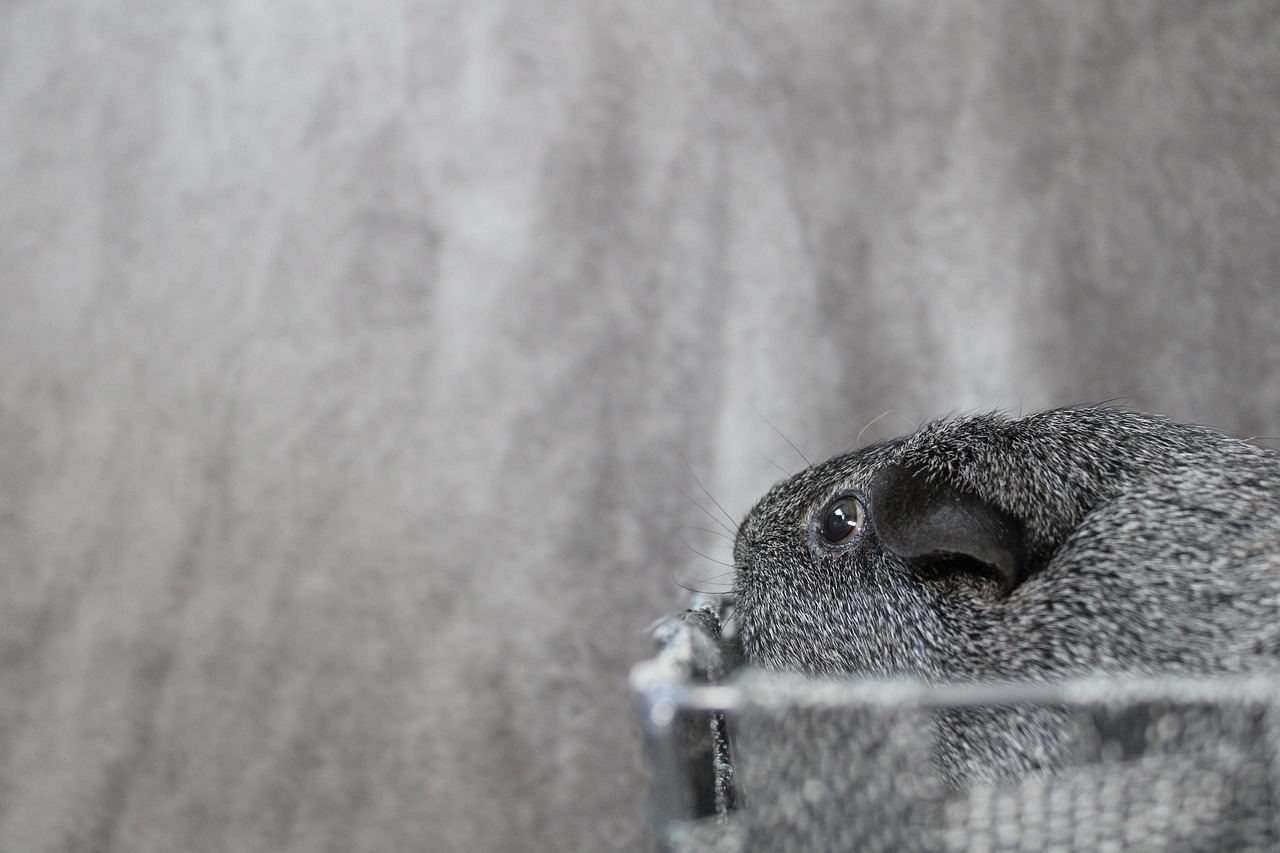
Ingredients to Avoid
When it comes to grooming your beloved furry friend, especially if they have sensitive skin, being aware of harmful ingredients in grooming products is crucial. Just like humans, pets can have reactions to certain substances that can lead to discomfort, irritation, or even more severe health issues. Imagine using a shampoo that leaves your skin feeling itchy and irritated; that's exactly what your pet might experience if you choose the wrong product. Therefore, it's essential to familiarize yourself with ingredients that should be avoided.
Some common ingredients can wreak havoc on sensitive skin. For example, fragrances are often added to make products smell nice, but they can cause allergic reactions in many pets. Similarly, parabens, which are preservatives found in many grooming products, can disrupt hormonal balance and lead to skin issues. Another ingredient to watch out for is alcohol, which can dry out the skin and exacerbate irritation. It's like putting rubbing alcohol on a cut; it stings and can worsen the situation.
Here’s a quick rundown of some ingredients you should definitely steer clear of:
- Fragrances: Can cause allergies and irritations.
- Parabens: Hormone disruptors that may lead to skin problems.
- Alcohol: Dries out skin and can cause irritation.
- Sulfates: Harsh detergents that strip natural oils from the skin.
- Artificial Colors: These can lead to allergic reactions and are unnecessary for grooming.
Understanding these ingredients is just the first step. It’s equally important to read labels carefully. Many products may claim to be "natural" or "gentle," but they can still contain harmful additives. Always opt for products that are specifically labeled as hypoallergenic or free from harsh chemicals. This ensures that you are taking the best possible care of your pet’s sensitive skin.
In addition, consider that some pets may have specific allergies or sensitivities that could necessitate avoiding certain ingredients that might not bother other animals. For instance, if your pet has had a previous reaction to a specific product, make a note of it and avoid any similar ingredients in the future. Just like us, pets can develop sensitivities over time, so staying vigilant is key.
In conclusion, being proactive about the ingredients in grooming products can make a significant difference in your pet’s grooming experience. By avoiding harmful substances, you not only ensure your pet's comfort but also promote their overall health. Remember, a happy pet is a healthy pet!

Choosing Hypoallergenic Products
When it comes to grooming your furry friend, making the right choice of products is crucial, especially for pets with sensitive skin. Hypoallergenic grooming products have been specifically formulated to reduce the risk of allergic reactions, making them a top choice for sensitive pets. But what exactly does "hypoallergenic" mean? In simple terms, it refers to products that are less likely to cause an allergic response. This is particularly important for pets who may already be prone to skin irritations or allergies.
One of the main advantages of hypoallergenic products is that they often contain fewer harsh chemicals and artificial fragrances. These substances can be irritating to sensitive skin, leading to discomfort and even more significant issues down the line. Instead, hypoallergenic products typically utilize natural ingredients that are gentler on the skin, providing a soothing effect rather than aggravation. For instance, ingredients like oatmeal and aloe vera are common in these formulations, offering both hydration and relief.
When choosing hypoallergenic products, it's essential to look for labels that explicitly state "hypoallergenic." However, not all products are created equal. Some may still contain trace amounts of allergens, so it’s wise to do a bit of detective work. Always check the ingredient list and avoid products with known irritants such as sulfates, parabens, and synthetic dyes. If you're unsure, consider keeping a list of ingredients that your pet has reacted to in the past, which can guide your purchasing decisions.
Another factor to consider is the pH balance of the grooming products. Pets have a different skin pH than humans, and using products that are not pH-balanced can lead to further irritation. Look for products that are specifically designed for pets, as they are more likely to have the appropriate pH levels. This is especially true for shampoos and conditioners, which can strip natural oils from the skin if they are too harsh.
To sum it up, selecting hypoallergenic grooming products is a vital step in ensuring your sensitive pet's comfort and health. By paying attention to the ingredients, pH levels, and product claims, you can make informed choices that will help keep your pet's skin happy and healthy. Remember, a little extra effort in choosing the right grooming products can lead to a more enjoyable grooming experience for both you and your furry companion!
- What are hypoallergenic grooming products? Hypoallergenic grooming products are specially formulated to minimize the risk of allergic reactions in pets, typically containing fewer harsh chemicals.
- How do I know if a product is hypoallergenic? Look for labels that specifically state "hypoallergenic" and check the ingredient list for known irritants.
- Can I use human grooming products on my pet? It's not recommended, as human products may not be pH-balanced for pets and could cause skin irritation.
- What ingredients should I avoid in grooming products? Avoid sulfates, parabens, synthetic fragrances, and dyes, as these can irritate sensitive skin.
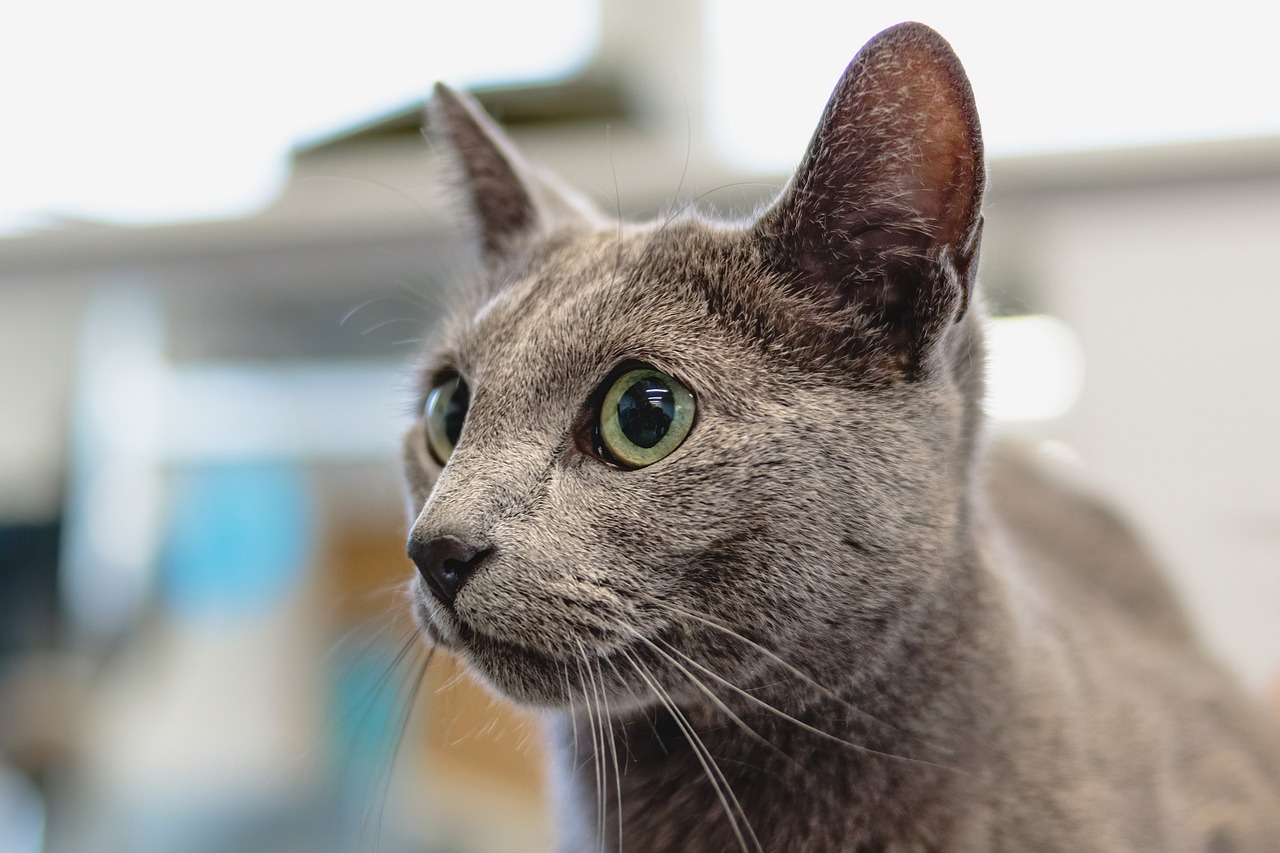
Importance of pH Balance
When it comes to grooming our beloved pets, one of the most crucial aspects often overlooked is the pH balance of the products we use. Just like humans, pets have a natural skin pH level that helps protect their skin from irritants and infections. Typically, a healthy skin pH for dogs and cats ranges between 6.0 and 7.5. Using grooming products that are not pH-balanced can disrupt this delicate equilibrium, leading to various skin issues such as dryness, irritation, and even allergic reactions.
Imagine your pet's skin as a well-tended garden. If you water it with the right amount of nutrients and maintain the proper acidity, it flourishes beautifully. However, if you introduce harsh chemicals or products with an incorrect pH level, you risk damaging that garden, making it susceptible to weeds and pests. Similarly, using grooming products that are too acidic or alkaline can strip away the natural oils that keep your pet's skin healthy and hydrated.
Moreover, a disrupted pH balance can lead to a host of problems, including:
- Increased Sensitivity: Pets with sensitive skin may react negatively to products that are not pH-balanced, resulting in redness and discomfort.
- Infections: An imbalanced pH can compromise the skin's barrier, making it easier for bacteria and fungi to invade.
- Allergic Reactions: Products that irritate the skin due to improper pH levels can trigger allergic responses, causing itching and inflammation.
To ensure you're using the right products, look for those specifically labeled as pH-balanced for pets. These products are formulated to align closely with your pet's natural skin pH, reducing the risk of irritation and promoting overall skin health. The benefits of using pH-balanced grooming products include:
- Enhanced Skin Protection: They help maintain the skin's natural barrier, protecting against environmental irritants.
- Improved Hydration: Proper pH levels help retain moisture in the skin, preventing dryness and flakiness.
- Fewer Allergic Reactions: Using the right products minimizes the chances of triggering allergies, making grooming a more pleasant experience.
In conclusion, understanding the importance of pH balance in grooming products is essential for the well-being of your sensitive pet. By choosing pH-balanced products, you can ensure that your furry friend enjoys a comfortable grooming experience while maintaining healthy skin. Remember, a happy pet is a well-groomed pet!
1. What is pH balance, and why is it important for pets?
pH balance refers to the level of acidity or alkalinity in a substance. For pets, maintaining a balanced pH in grooming products is crucial to protect their skin and prevent irritation or infections.
2. How can I tell if a grooming product is pH-balanced?
Look for labels that specifically mention "pH-balanced for pets." You can also check the ingredient list for any harsh chemicals that might disrupt the pH balance.
3. What are the signs that a grooming product is irritating my pet's skin?
Signs may include redness, itching, excessive scratching, or flaky skin. If you notice any of these symptoms, discontinue use immediately and consult your veterinarian.
4. Are there any natural alternatives for grooming sensitive pets?
Yes! Many natural grooming products are available that use gentle, pH-balanced ingredients. Always check the label to ensure they are suitable for sensitive skin.

Reading Labels Effectively
When it comes to choosing the right grooming products for your sensitive pet, is an essential skill. Imagine you're at the store, standing in front of a wall of shampoo bottles, each promising to be the best for your furry friend. It can be overwhelming, right? But fear not! With a little guidance, you can become a label-reading pro. First, start by looking for the ingredient list. This is where you'll find the key to whether a product is suitable for your pet's unique needs. Ingredients are usually listed in descending order by weight, meaning the first few ingredients are the most significant. If you see harsh chemicals or fragrances listed early on, it's best to put that product back on the shelf.
Next, pay attention to terms like “hypoallergenic” or “dermatologist tested”. While these phrases sound good, they don’t always guarantee safety for sensitive skin. Always check the actual ingredients. For example, some products may claim to be hypoallergenic but still contain common allergens like certain essential oils or preservatives. It’s like buying a cake that looks delicious but is filled with ingredients you know you can’t eat. You wouldn’t want to take that risk for your pet!
Another crucial aspect to consider is the pH level of the product. Pets have a different skin pH than humans, typically around 6.2 to 7.4. Look for products labeled as pH balanced to ensure they are safe for your pet’s skin. Using a product that is too acidic or too alkaline can lead to irritation and discomfort. In fact, it’s similar to using a skincare product that’s not meant for your skin type; it can disrupt the natural balance and cause more harm than good.
It’s also beneficial to be aware of preservatives in grooming products. Some preservatives, like parabens and sulfates, can irritate sensitive skin. Always opt for products with natural preservatives, as they are generally gentler. If you’re unsure, look for products that are labeled as “free from parabens, sulfates, and artificial fragrances.” This can help you steer clear of potential irritants.
Lastly, don't hesitate to consult online resources or forums where other pet owners share their experiences. Sometimes, a product might have a fancy label, but real-life experiences tell a different story. Remember, you’re not alone in this journey of finding the right grooming products for your sensitive pet. With a little patience and diligence, you can navigate the aisles like a pro!
- What should I look for first on a grooming product label? Start with the ingredient list, focusing on the first few ingredients to gauge the product's quality.
- Are all hypoallergenic products safe for my pet? Not necessarily. Always check the actual ingredients, as some hypoallergenic products may still contain allergens.
- Why is pH balance important in grooming products? Pets have a different skin pH than humans, and using unbalanced products can lead to irritation and discomfort.
- How can I find out if a product is truly safe? Look for products labeled as free from parabens, sulfates, and artificial fragrances, and consult reviews from other pet owners.

Consulting Your Veterinarian
When it comes to ensuring the health and comfort of your sensitive pet, consulting your veterinarian is an absolute game-changer. Just like we seek advice from doctors when we’re feeling under the weather, our furry friends deserve the same level of care and attention. Your vet is not just a medical professional; they are a treasure trove of knowledge about pet health, including the best grooming products suited for sensitive skin.
So, why is it so important to consult your veterinarian? First off, they can provide personalized recommendations based on your pet's unique needs. Every pet is different, and what works wonders for one might not be suitable for another. For instance, if your dog has a history of allergies or skin irritations, your vet can guide you towards products that are specifically formulated to address those issues. This tailored approach can save you from the heartache of trying multiple products that may not work, which can be both frustrating and costly.
Moreover, your veterinarian can help you understand the underlying causes of your pet's skin sensitivity. Is it an environmental factor, a dietary issue, or perhaps a reaction to certain grooming products? By identifying the root cause, you can make informed decisions that not only improve your pet's grooming experience but also enhance their overall well-being. Imagine being able to pinpoint what makes your pet uncomfortable and addressing it directly—that's the power of professional insight!
Another significant advantage of consulting your vet is their ability to keep you updated on the latest advancements in pet care. The world of pet grooming products is constantly evolving, with new formulations hitting the market regularly. Your vet can inform you about the latest hypoallergenic shampoos, conditioners, and other grooming essentials that are safe for sensitive pets. They might even have samples or recommendations for reputable brands that have been tried and tested in their practice.
It’s also worth noting that your veterinarian can advise you on how to introduce new products gradually. Sudden changes in your pet's grooming routine can lead to unexpected reactions. Your vet may suggest a gradual transition, allowing your pet's skin to adjust to new products without causing irritation. This kind of careful approach can make a world of difference in your pet's comfort level during grooming sessions.
In summary, consulting your veterinarian is not just a good idea; it’s a vital step in ensuring your sensitive pet receives the best care possible. Their expertise can guide you in selecting the right grooming products, understanding your pet's specific needs, and keeping you informed about the latest in pet care. So, don’t hesitate to reach out to your vet the next time you’re unsure about which grooming products to choose. Your pet will thank you for it!
- How often should I consult my veterinarian about grooming products?
It's a good idea to check in with your vet whenever you consider introducing new grooming products, especially if your pet has sensitive skin. - Can my veterinarian recommend specific brands?
Yes! Many veterinarians have favorite brands that they trust and can recommend based on your pet's needs. - What should I do if my pet has a reaction to a grooming product?
Contact your veterinarian immediately for advice on how to treat the reaction and what products to avoid in the future.

Product Testing and Patch Tests
When it comes to grooming your sensitive pet, taking the time to conduct product testing and patch tests can make a world of difference. Just like we humans have our own skin sensitivities, pets can also react differently to various grooming products. You wouldn’t want to slather on a new moisturizer without checking how your skin reacts, right? The same principle applies to our furry friends. So, how do you go about ensuring that the products you choose are safe and effective for your pet?
First, let’s talk about product testing. This involves trying out a small amount of the grooming product on a less sensitive area of your pet’s body, such as the inner thigh or the back of their ear. This way, you can observe any immediate reactions, such as redness, itching, or swelling. If your pet seems to tolerate the product well over the course of a day or two, it’s a good sign that it may be suitable for their grooming routine.
Next up is the patch test. This is a more formalized approach to checking for allergies or sensitivities. Here’s how to do it:
- Choose a small area of skin, ideally where your pet won’t lick or scratch.
- Apply a small amount of the product and leave it on for 24 hours.
- After the time has passed, check for any adverse reactions.
If you notice any signs of irritation, it’s best to avoid that product entirely. Remember, even if a product is marketed as “gentle” or “natural,” it doesn’t mean it’s right for every pet. Just like people, pets can have unique reactions to different ingredients.
Another important aspect of testing is to consider the ingredients in the products you are using. Some common irritants include fragrances, alcohols, and sulfates, which can strip the skin of its natural oils and lead to discomfort. Therefore, always check the ingredient list before applying anything new. If you’re unsure about a certain ingredient, don’t hesitate to do a little research or ask your veterinarian for guidance.
In addition to testing products, it’s essential to monitor your pet’s overall skin condition regularly. Look for any changes in their fur or skin texture, and note if they seem more uncomfortable than usual during or after grooming sessions. Keeping a grooming journal can help you track which products work best and which ones to avoid.
Finally, remember that patience is key. Just like finding the perfect pair of shoes, it may take a few tries to discover the right grooming products for your sensitive pet. But with careful testing and observation, you’re setting your furry friend up for a much more comfortable grooming experience.
1. How long should I wait to see if a product works for my pet?
It’s best to observe your pet for at least 24 to 48 hours after applying a new product to see if any reactions occur.
2. Can I use human grooming products on my pet?
No, human grooming products often contain ingredients that can be harmful to pets. Always use products specifically designed for animals.
3. What should I do if my pet has a reaction to a grooming product?
If your pet shows signs of irritation, stop using the product immediately and consult your veterinarian for advice.
4. Are natural products always better for sensitive pets?
Not necessarily. While many natural products can be gentler, some pets may still react to natural ingredients. Always conduct patch tests.

Recommendations for Sensitive Pet Grooming Products
When it comes to grooming your sensitive pet, choosing the right products is like finding the perfect pair of shoes – they need to fit well and provide comfort. Here, we've compiled a list of recommended grooming products that are specifically designed for pets with sensitive skin. These products are not only gentle but also effective in maintaining your furry friend's hygiene and comfort.
One of the top recommendations is hypoallergenic shampoo. Brands like Vet’s Best Hypoallergenic Dog Shampoo and Earthbath Oatmeal & Aloe Shampoo are excellent choices. They are formulated without harsh chemicals and are enriched with natural ingredients that soothe the skin. These shampoos help cleanse without stripping the skin of its natural oils, ensuring your pet stays clean and comfortable.
Another essential product is a moisturizing conditioner. Look for options such as Pet Head Oatmeal Conditioner or FURminator deShedding Ultra Premium Conditioner. These conditioners are designed to hydrate the skin and coat, helping to reduce itching and irritation. They can also make brushing easier, which is a bonus for both you and your pet!
For pets that require additional care, consider a soothing spray. Products like Vet’s Best Allergy Itch Relief Spray or Burt's Bees for Dogs Natural Itch Soothing Spray can provide instant relief from irritation. These sprays are formulated with natural ingredients like aloe vera and chamomile, which are known for their calming properties.
Lastly, don't overlook the importance of grooming tools. A soft-bristle brush or a rubber grooming mitt can make a world of difference. Tools like the Hertzko Self Cleaning Slicker Brush are gentle on sensitive skin while effectively removing loose fur and dirt. Regular brushing not only keeps your pet's coat healthy but also promotes bonding time between you and your furry friend.
In summary, when selecting grooming products for your sensitive pet, always opt for those that are hypoallergenic, free from harsh chemicals, and enriched with soothing ingredients. By choosing the right products, you ensure a comfortable grooming experience that keeps your pet happy and healthy.
Q: How do I know if my pet has sensitive skin?
A: Signs of sensitive skin in pets include excessive scratching, redness, and irritation. If you notice these symptoms, it's essential to consult your veterinarian.
Q: Can I use human grooming products on my pet?
A: It's best to avoid using human grooming products on pets as they may contain ingredients that can irritate their skin. Always choose products specifically formulated for pets.
Q: How often should I groom my sensitive pet?
A: The frequency of grooming depends on your pet's breed and coat type. Generally, regular grooming every few weeks is recommended to maintain their coat and skin health.
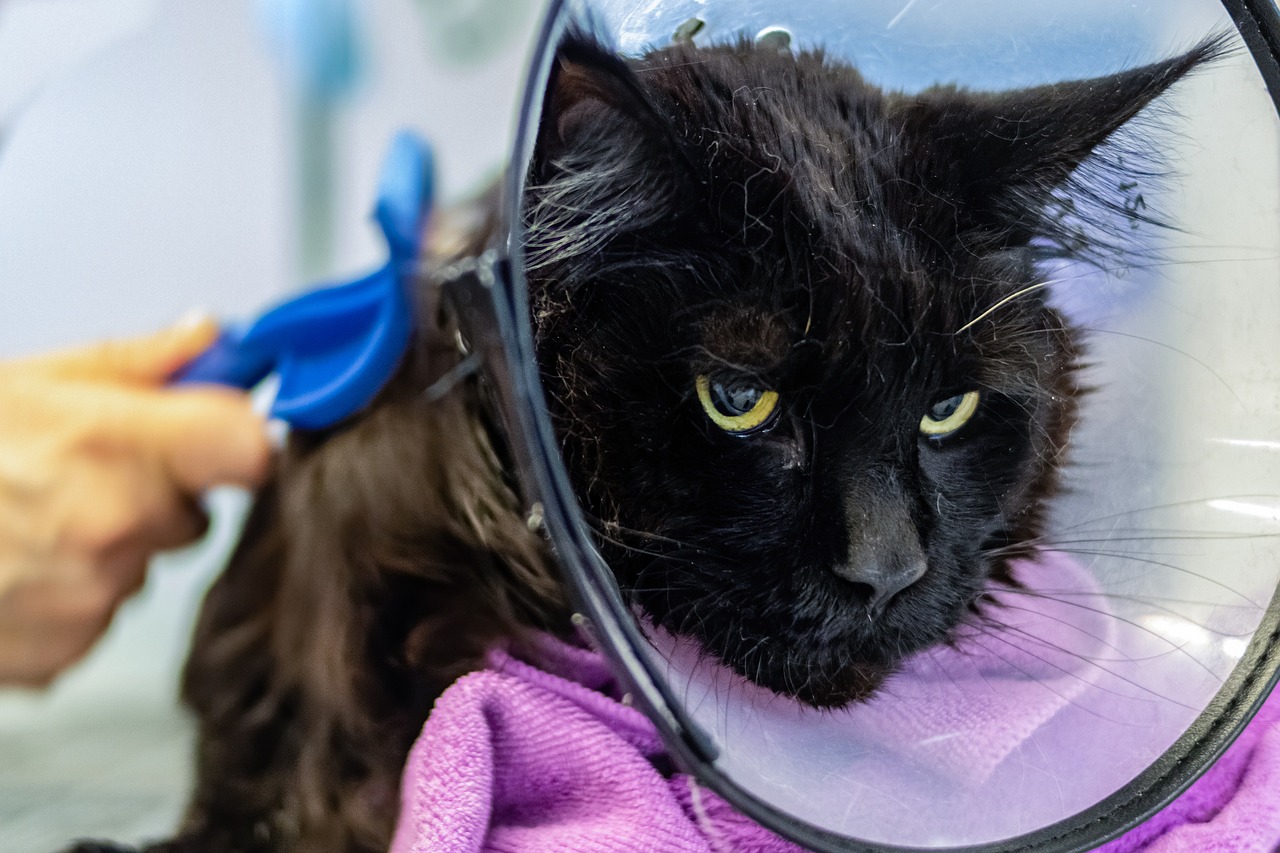
Establishing a Grooming Routine
Creating a consistent grooming routine for your sensitive pet is not just about keeping them looking good; it's about ensuring their comfort and health. Think of grooming as a bonding experience, much like a spa day for your furry friend. It’s essential to make this process as enjoyable as possible, both for you and your pet. But where do you start? Let's dive into the key elements of establishing an effective grooming routine!
First off, consider your pet's specific needs. Different breeds and sizes have varying grooming requirements. For instance, long-haired breeds may require daily brushing to prevent mats and tangles, while short-haired pets might only need a weekly brush. Pay attention to your pet’s coat type and skin sensitivity. A good rule of thumb is to schedule grooming sessions that align with your pet’s shedding patterns and skin conditions. This not only helps in managing their coat but also keeps their skin healthy and free from irritations.
Next, set a regular grooming schedule. Consistency is key! Whether you choose to groom your pet weekly, bi-weekly, or monthly, sticking to a routine helps your pet get used to the process. Just like humans, pets thrive on routine. You might want to mark it on your calendar or set reminders on your phone. This way, you’re less likely to forget and your pet knows what to expect. For example, you could designate Sundays as “Grooming Day,” turning it into a special time for both of you.
When grooming, always use the right tools. Invest in high-quality grooming products that are suitable for sensitive skin. This includes brushes, shampoos, and conditioners that are hypoallergenic and pH-balanced. If you're unsure about what to use, don't hesitate to ask your veterinarian for recommendations. Having the right tools not only makes the process easier but also more enjoyable for your pet. You wouldn’t want to use a rough brush on your own hair, right? The same goes for your pet!
During grooming sessions, take your time and be gentle. Start with short sessions to help your pet adjust, gradually increasing the duration as they become more comfortable. This is particularly important for sensitive pets, as they may not respond well to prolonged handling. Always watch for signs of discomfort, such as whining or trying to escape. If your pet seems anxious, take a step back and try to make the experience more positive. You might use treats or toys as incentives, creating a fun atmosphere that they look forward to.
Lastly, don’t forget to incorporate a reward system. After each grooming session, give your pet a treat or engage in their favorite activity. This positive reinforcement will help them associate grooming with good things, making it easier for you both in the long run. Remember, establishing a grooming routine is not just about hygiene; it’s about building trust and comfort between you and your beloved pet.
1. How often should I groom my sensitive pet?
The frequency of grooming depends on your pet's breed, coat type, and individual needs. Generally, long-haired pets may need daily grooming, while short-haired ones might be fine with weekly sessions.
2. What should I do if my pet dislikes grooming?
Start with short sessions and gradually increase the time. Use treats and praise to create positive associations. If they remain anxious, consult a professional groomer for advice.
3. Are there specific products I should avoid for sensitive pets?
Yes, avoid products containing harsh chemicals, artificial fragrances, and alcohol. Always opt for hypoallergenic and pH-balanced grooming products.
4. Can I groom my pet at home?
Absolutely! With the right tools and techniques, you can groom your pet at home. Just ensure you’re using appropriate products and taking your time to make it a positive experience.
Frequently Asked Questions
- What are the signs of sensitive skin in pets?
Signs of sensitive skin in pets can include excessive scratching, redness, inflammation, or flaky skin. If your pet seems uncomfortable during grooming or has recurring skin issues, it might be time to evaluate their grooming products.
- Which ingredients should I avoid in grooming products?
Avoid products containing harsh chemicals like sulfates, parabens, artificial fragrances, and dyes. These can irritate sensitive skin and lead to allergic reactions. Always check the ingredient list before purchasing any grooming product.
- What are hypoallergenic grooming products?
Hypoallergenic grooming products are specially formulated to reduce the risk of allergic reactions. They are often free from common allergens and irritants, making them ideal for pets with sensitive skin. Look for labels that specify hypoallergenic formulas.
- Why is pH balance important in grooming products?
Maintaining a proper pH balance is crucial for sensitive pets because it helps protect their skin barrier. Products that are too acidic or alkaline can cause irritation and exacerbate skin conditions, so always opt for pH-balanced options.
- How can I effectively read product labels?
When reading product labels, look for key terms like "hypoallergenic," "fragrance-free," and "dermatologist-tested." Familiarize yourself with common irritants and check for certifications or recommendations from veterinarians.
- Should I consult my veterinarian before choosing grooming products?
Absolutely! Your veterinarian can provide personalized recommendations based on your pet's specific needs and health history. They can help you identify the best products that will keep your furry friend comfortable and healthy.
- How do I conduct a patch test for new grooming products?
To conduct a patch test, apply a small amount of the product to a discreet area of your pet's skin and wait 24 hours. If you notice any redness, swelling, or irritation, discontinue use immediately. This simple test can save your pet from potential discomfort.
- What are some recommended grooming products for sensitive pets?
Some highly recommended grooming products for sensitive pets include those that are labeled as hypoallergenic, organic, or specifically formulated for sensitive skin. Brands that focus on natural ingredients are often a safe bet. Always check reviews and consult your vet for the best options.
- How can I establish a grooming routine for my pet?
Start by setting a regular schedule that fits your pet's needs, whether it's weekly or bi-weekly. Incorporate short grooming sessions to keep your pet comfortable, and always use gentle techniques. Over time, your pet will become accustomed to the routine, making it easier for both of you!


